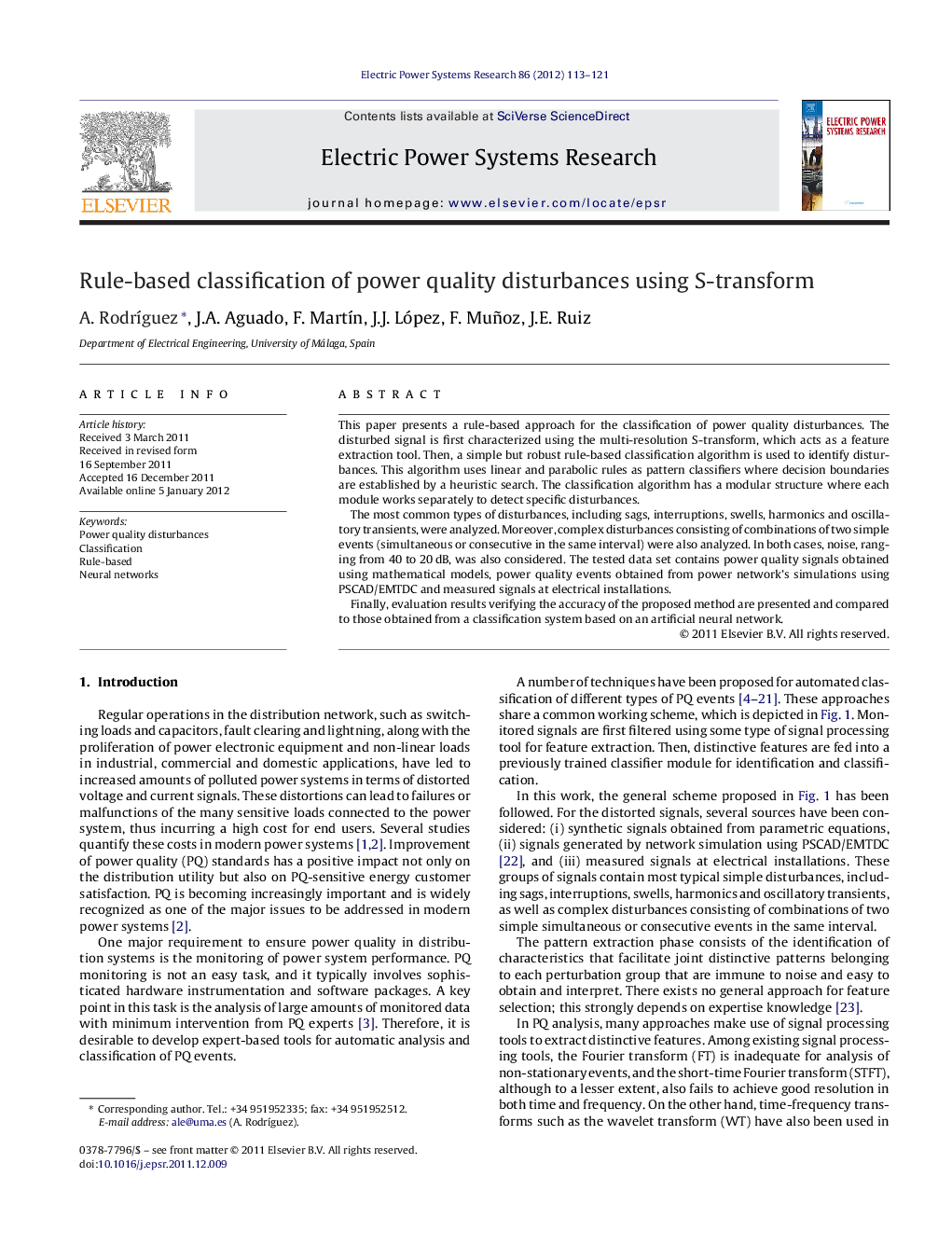| Article ID | Journal | Published Year | Pages | File Type |
|---|---|---|---|---|
| 703955 | Electric Power Systems Research | 2012 | 9 Pages |
This paper presents a rule-based approach for the classification of power quality disturbances. The disturbed signal is first characterized using the multi-resolution S-transform, which acts as a feature extraction tool. Then, a simple but robust rule-based classification algorithm is used to identify disturbances. This algorithm uses linear and parabolic rules as pattern classifiers where decision boundaries are established by a heuristic search. The classification algorithm has a modular structure where each module works separately to detect specific disturbances.The most common types of disturbances, including sags, interruptions, swells, harmonics and oscillatory transients, were analyzed. Moreover, complex disturbances consisting of combinations of two simple events (simultaneous or consecutive in the same interval) were also analyzed. In both cases, noise, ranging from 40 to 20 dB, was also considered. The tested data set contains power quality signals obtained using mathematical models, power quality events obtained from power network's simulations using PSCAD/EMTDC and measured signals at electrical installations.Finally, evaluation results verifying the accuracy of the proposed method are presented and compared to those obtained from a classification system based on an artificial neural network.
► Power quality disturbances are classified by a robust rule-based approach. ► S-transform analysis efficiently extracts distinctive features. ► Linear and parabolic rules correctly identify simple and complex disturbances. ► PSCAD-based simulations and real signals are successfully classified. ► The rule-based classifier outperforms classical ANN-based approaches.
